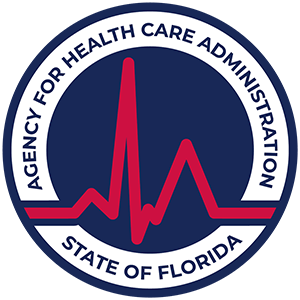Disorders Caused by Alcohol: Alcohol-Related Diseases
Explore disorders caused by alcohol, their effects on physical and mental health, and ways to seek help.
Alcohol and Physical Health
Excessive alcohol consumption can lead to a multitude of health problems. A comprehensive understanding of the disorders caused by alcohol can help individuals make informed decisions about their consumption habits.
Impact on Digestive System
Alcohol can severely impact the functioning of the digestive system. It can impair the function of the muscles that separate the esophagus from the stomach, which can lead to heartburn. Additionally, alcohol can damage the mucosal lining of the esophagus, increasing the risk of esophageal cancer.

The effects of alcohol extend to the stomach as well, interfering with gastric acid secretion and the activity of muscles surrounding the stomach. This can impair muscle movement in the small and large intestines, contributing to conditions like diarrhea. Lastly, alcohol inhibits the absorption of nutrients in the small intestine and increases the transport of toxins across the intestinal walls, which can lead to alcohol-related damage to the liver and other organs.
Effects on Liver
The liver is particularly vulnerable to the effects of alcohol. According to Mayo Clinic Health System, excessive alcohol consumption can lead to three types of liver disease: Fatty liver, Alcoholic hepatitis, and Cirrhosis.
Fatty liver is the earliest stage of alcohol-related liver disease and is seen in almost all heavy drinkers. Most people with fatty liver don't have symptoms, although they can have an enlarged liver or mild discomfort in the upper right side of the abdomen.
Cirrhosis is a serious condition that usually develops after 10 or more years of drinking. It's seen in 10%-20% of heavy drinkers. Scar tissue builds up and replaces most of the liver cells, making it irreversible. Long-term heavy alcohol consumption can lead to serious health complications, underscoring the need for moderation and mindful consumption.
Alcohol-Related Diseases
Alcohol misuse can lead to a range of health issues, particularly impacting the liver. We will explore two major disorders caused by alcohol: fatty liver and alcoholic hepatitis and cirrhosis.
Fatty Liver and Its Symptoms
Fatty liver, also known as hepatic steatosis, is the earliest stage of alcohol-related liver disease and is prevalent among heavy drinkers. In fact, almost all heavy drinkers develop fatty liver according to the Mayo Clinic Health System.
Despite this, most people with fatty liver do not exhibit clear symptoms. However, some may experience an enlarged liver or mild discomfort in the upper right side of the abdomen. It's crucial to note that the absence of symptoms does not indicate the absence of harm. Continuous alcohol misuse can lead to more severe liver diseases.
Alcoholic Hepatitis and Cirrhosis
Alcoholic hepatitis and cirrhosis are more severe forms of liver disease that can result from excessive alcohol consumption. Alcoholic hepatitis is characterized by inflammation and damage to the liver. Cirrhosis, on the other hand, is a serious condition that develops after 10 or more years of heavy drinking. It's marked by the replacement of healthy liver cells with scar tissue, an irreversible process that can severely impact liver function.
According to the Mayo Clinic Health System, 10%–20% of heavy drinkers develop cirrhosis.
The heavy toll of alcohol misuse is reflected in these disorders, emphasizing the importance of awareness and prevention. By understanding the risks and consequences, individuals can make more informed decisions about their alcohol consumption.
Alcohol and Cardiovascular Health
Alcohol consumption, particularly heavy drinking, can have serious repercussions on cardiovascular health. This section explores the risks of cardiovascular diseases and the effects on heart muscles due to alcohol use.
Risk of Cardiovascular Diseases
Evidence shows that there is no safe level of alcohol consumption when it comes to heart health. Even small amounts of alcohol can increase the risk of developing cardiovascular diseases [2].
High blood pressure, a leading cause of cardiovascular diseases such as heart disease and stroke, is a major risk factor associated with alcohol intake. Just one alcoholic drink per day is linked to a higher risk of developing an irregular heartbeat compared to those who do not drink alcohol. Heavy drinking on a single occasion can also trigger an irregular heartbeat, often referred to as 'holiday heart' [2].
While moderate alcohol consumption (1 to 2 drinks per day) is associated with a reduced risk of cardiovascular diseases, greater amounts of alcohol consumption and binge drinking are linked to an increased risk of these conditions. Binge drinking, especially with higher frequency, is associated with a heightened risk of cardiovascular conditions such as hypertension, stroke, and myocardial infarction.
Effects on Heart Muscles
Long-term alcohol use can have damaging effects on the heart muscles. It can cause the heart to stretch and enlarge, leading to a condition called cardiomyopathy, which weakens the heart muscles and can result in heart failure.
Acute physiologic intoxicating doses of alcohol can lead to a negative inotropic effect, weakening the heart's ability to contract. However, these effects are transient and small changes from baseline.
Long-term heavy alcohol consumption can lead to alcoholic cardiomyopathy (ACM), characterized by a dilated left ventricle, increased left ventricular mass, and reduced left ventricular ejection fraction. ACM is more common in individuals who consume 6 to 8 drinks per day for at least 20 years. ACM patients have good clinical outcomes when treated with standard heart failure therapies.
Understanding the relationship between alcohol consumption and cardiovascular health is crucial for the prevention and treatment of disorders caused by alcohol. It underlines the importance of moderation and the potential dangers of excessive alcohol use.
Mental Health and Alcohol Use
The connection between mental health and alcohol use is notable, with numerous studies highlighting the interplay between the two. Alcohol-use disorders (AUDs) often co-exist with other severe mental illnesses, influencing their progression and management.
Co-Occurring Mental Disorders
Alcohol-use disorders commonly occur in individuals with other severe mental illnesses, such as schizophrenia or bipolar disorder. The occurrence of AUDs can exacerbate their psychiatric, medical, and family problems, leading to a more complex treatment process.
According to the National Comorbidity Study, individuals with mania are 9.7 times as likely as the general population to meet the lifetime criteria for alcohol dependence [4].
The NIAAA reports that the most common mental health conditions that co-occur with AUD are depressive disorders, anxiety disorders, trauma- and stress-related disorders, other substance use disorders, and sleep disorders.
Impact on Anxiety and Depression
The prevalence of anxiety, depression, and other psychiatric disorders is much higher among persons with AUD compared to the general population. Alcohol use may exacerbate anxiety symptoms in the short term, leading to a cycle of increased anxiety and further alcohol use.
It's important to understand that while alcohol may seem like a temporary solution to cope with mental health issues, in the long run, it can worsen the symptoms and complicate the recovery process. Recognizing the co-occurrence of these disorders is crucial for implementing effective treatment strategies and providing comprehensive care.
Treatment and Support
Addressing the disorders caused by alcohol involves a multi-faceted approach that not only focuses on treating the physical symptoms but also aims to provide mental health support. It's essential to note that treatment and support plans should be personalized to cater to the unique needs of each individual.
Integrated Treatment Programs
Integrated treatment programs have been found to yield more positive outcomes compared to traditional, nonintegrated treatment systems. These programs combine alcohol and other drugs (AOD)-abuse and mental health interventions in the same setting. One of the key benefits of these programs is the progressive reduction in AOD use. In fact, the number of patients who remain abstinent steadily increases with each year of consistent treatment.
Addressing Co-Occurring Disorders
It's important to highlight that the prevalence of anxiety, depression, and other psychiatric disorders is substantially higher among individuals with Alcohol Use Disorder (AUD) compared to the general population [5].
The most common mental health conditions that co-occur with AUD include depressive disorders, anxiety disorders, trauma- and stress-related disorders, other substance use disorders, and sleep disorders.
Individuals with co-occurring AUD and psychiatric disorders tend to return to using alcohol more frequently, and they experience more severe psychiatric symptoms. This often results in higher rates of hospitalization and suicide [5].
Alcohol use can worsen anxiety symptoms in the short term, leading to a cycle of increased anxiety and maladaptive drinking. Furthermore, sleep disorders are common among individuals with AUD, and alcohol use can exacerbate sleep-disordered breathing and periodic limb movements during sleep, compromising sleep quality.
Addressing these co-occurring disorders is integral to the recovery process. Comprehensive treatment approaches that include psychosocial treatments, pharmacotherapies, and mutual-help groups can provide the necessary support and resources for individuals grappling with AUD and co-occurring mental health disorders.
Risk Factors and Prevention
Understanding the risk factors associated with alcohol use disorders (AUD) is essential for taking preventative measures. This section discusses the contributing factors to AUD and strategies for prevention.
Factors Contributing to AUD
Alcohol use disorder often co-occurs with other mental health disorders including depressive disorders, anxiety disorders, trauma- and stress-related disorders, other substance use disorders, and sleep disorders. The prevalence of these disorders is significantly higher among individuals with AUD compared to the general population.
Moreover, alcohol use may exacerbate anxiety symptoms in the short term, leading to a cycle of increased anxiety and maladaptive drinking. This can create a vicious cycle where a person uses alcohol to relieve their anxiety while the alcohol itself worsens the anxiety over time.
Furthermore, the prevalence of anxiety, depression, and other psychiatric disorders is much higher among persons with AUD compared to the general population. This suggests that these disorders may play a role in the development or exacerbation of alcohol use disorders.
Finally, AUD's commonly occur in people with severe mental illnesses such as schizophrenia or bipolar disorder, and can worsen their psychiatric, medical, and family problems.
Strategies for Prevention
Preventing AUD involves addressing the various contributing factors. This includes providing education about the risks associated with excessive alcohol use, promoting healthy coping strategies for stress and anxiety, and providing mental health support.
Early intervention is key. Recognizing the signs of problematic drinking and seeking help is crucial. This can involve accessing counseling or therapy services, joining support groups, or enrolling in rehabilitation programs.
In cases where AUD co-occurs with other mental health disorders, integrated treatment programs can be beneficial. These programs address both the alcohol use disorder and the co-occurring mental health disorder simultaneously, offering a comprehensive approach to treatment.
Lastly, creating a supportive environment is essential. Encouraging open conversations about alcohol use and mental health can help to reduce stigma and encourage individuals to seek help when needed. Family and community support can play a significant role in prevention and recovery from AUD.














.svg)








